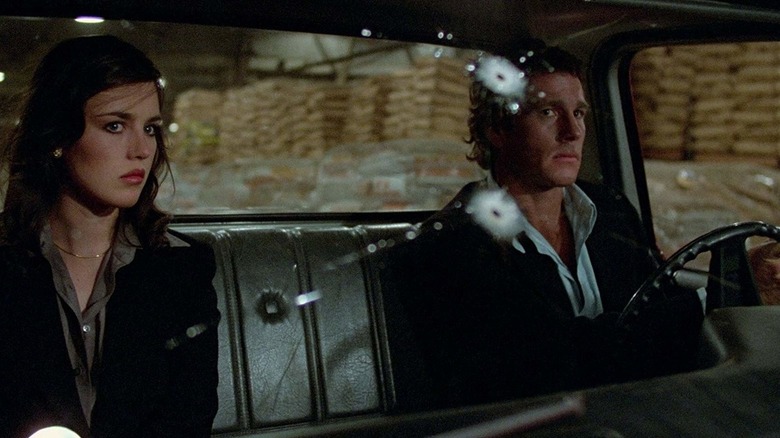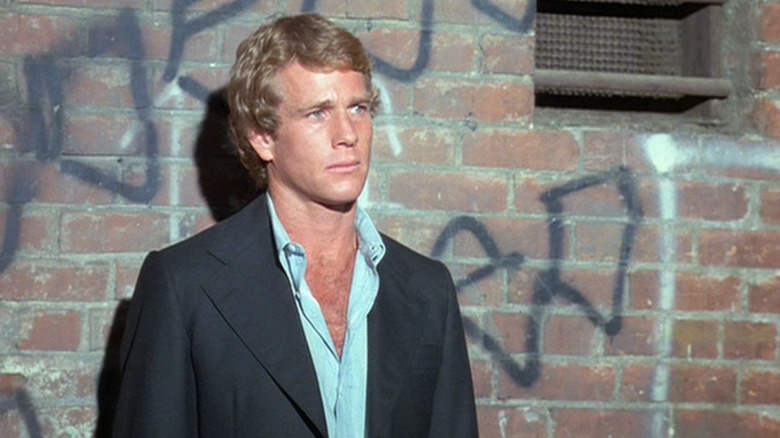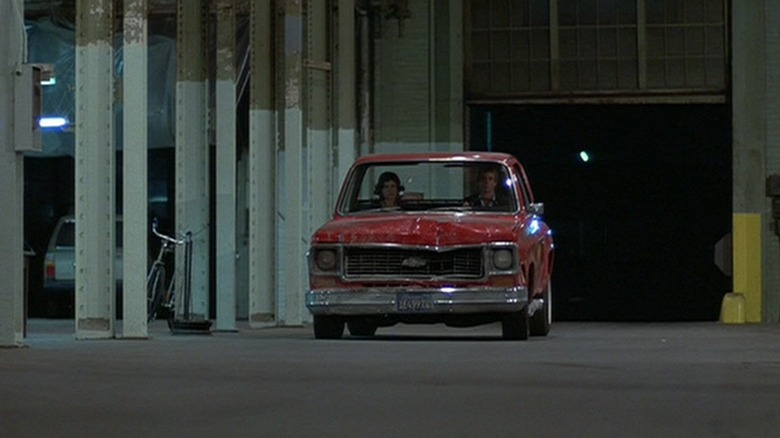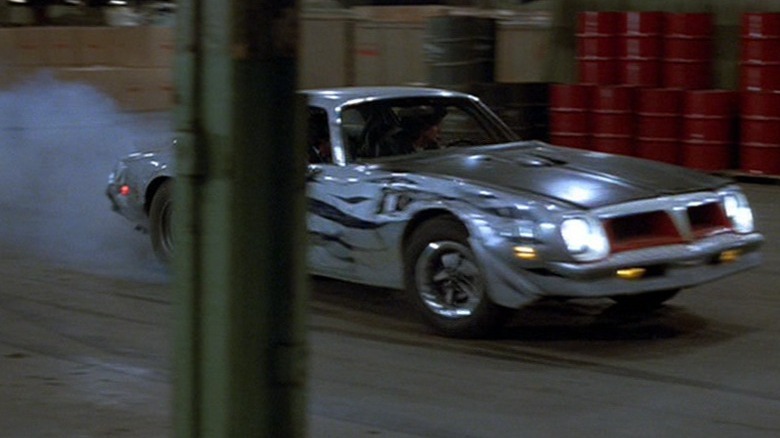Why The Driver's 'Playing Chicken' Scene Had To Be Perfect On The First Take
Walter Hill's 1978 crime classic "The Driver" comes directly from the golden age of '70s action movies, complete with villainous cop characters, slick outfits, a gritty sensibility, and, of course, many, many car chases. For as cool as the movie is — with its action, its sleazy Los Angeles clubs, and its whispered conspiracies between cops and criminals — it's more than anything a pure vision of a cat-and-mouse saga. No frills, no excess, no names.
The movie's lead is only known as The Driver (Ryan O'Neal just a couple years after his even more difficult experience on "Barry Lyndon") and his adversary is known only as The Detective (Bruce Dern), who swears from the movie's opening moments that he will catch this getaway driver by any means necessary. It won't be easy, as The Driver knows Los Angeles' streets, abandoned lots, and back alleys better than anybody. The movie opens with a heist, and a perfect example of The Driver's skill and confidence. He drives fearlessly, leading a trail of cops to ruin and cutting through intersections with no care for anyone else on the road.
That fearlessness and precision was present behind the camera as well. And for the movie's climactic car duel, in which The Driver (in a Chevy C-10 Stepside) is trying to corner petty thieves (in a brand-new Trans Am), the filmmakers had only one chance to get it right.
The story
Unable to catch The Driver after that initial gonzo heist, The Detective begins to scheme with other local criminals, threatening them with jail time unless they're willing to trap his real prey. If they succeed in delivering The Driver to The Detective, they will be cleared of wrongdoing.
The criminals Teeth (Rudy Ramos) and Glasses (Joseph Walsh) meet with The Driver and question his abilities and his reputation. He responds by wrecking their Mercedes in a parking deck, smashing it into walls with dynamite precision and even knocking the driver side door off. According to the film's stunt driver Billy Burton, O'Neal was actually trained to do some of the driving stunts in this scene, and that "no process shots were used," adding to the authenticity of the action.
The Driver refuses to work with these petty criminals on their heist, having no interest in getting caught. The Detective visits him and strikes his interest by suggesting a double-or-nothing game. It becomes less about the job and more about whether The Driver can skirt up against the law without getting caught. Of course, more double-crossing occurs, on a minute-to-minute basis, and after securing the heist money, The Driver waits in a hotel for it to be transferred and laundered. When Teeth steals the key to the locker with the clean money, he must go after him, resulting in the most intense game of chicken this side of "Rebel Without a Cause."
The chase
One year before creating controversy with his 1979 teen gang movie "The Warriors," Walter Hill created the perfect car chase scene with "The Driver's" climax.
In a game of chicken, two drivers careen toward one another, a challenge to see which one of them gives up and swerves away first. The first to give up, then, is a "chicken." In this case, the game comes at the end of the thrilling chase through L.A., in which the camera hangs off windshields and the sides of cars, with the soundtrack consisting of only honking car horns and the screech of tires.
The movie draws out all the suspense it can manage from whether or not the thieves will get caught, sticking with them as they eye their surroundings until they think they're safe. The film then cuts back to the Chevy, where we see The Driver ready to face them head-on. We've already seen how dedicated The Driver is to his job — when he's taking his truck up against the Trans Am, we know he's going to keep on going.
The two cars drive towards each other fast, down the narrow strip, with The Driver refusing to move. The thieves in their Trans Am are forced to make a quick dip to the side, one that sends them flipping into the air, and crashing into the ground. It's a big, horrific crash, one that still makes a viewer wonder just how it was done.
The stunt
The truth is that the stunt team for "The Driver" only had one Trans Am to work with. And if it got wrecked, there would be no way to get a second take, meaning they only had one chance to get the whole thing right. Stuntman Billy Burton was driving the Trans Am and had to operate the car for its big roll. As he said:
"We only had one Trans Am, so everything had to work first time. It had a 6.6-litre motor and full race cams. Inside, I had a full cage and seven-point harness."
The roll cage and harness would be necessary for a stunt of this magnitude and it worked perfectly, protecting the stuntman even as people on-set panicked for his safety. Burton claimed that Hill thought he was dead, which, looking at the scene they filmed, seems like a reasonable assumption. As the camera lingers on the smoking Firebird, cutting into every angle to survey the debris, it's hard not to see the result of the stunt as incredible good fortune.
That commitment to the movie's stunts elevated it from a taut thriller into a seminal action film, with one of the all-time great car chases and finales. It checks out that Edgar Wright cited it as an influence on his 2017 film "Baby Driver" – like its protagonist, it's impossible to beat.



